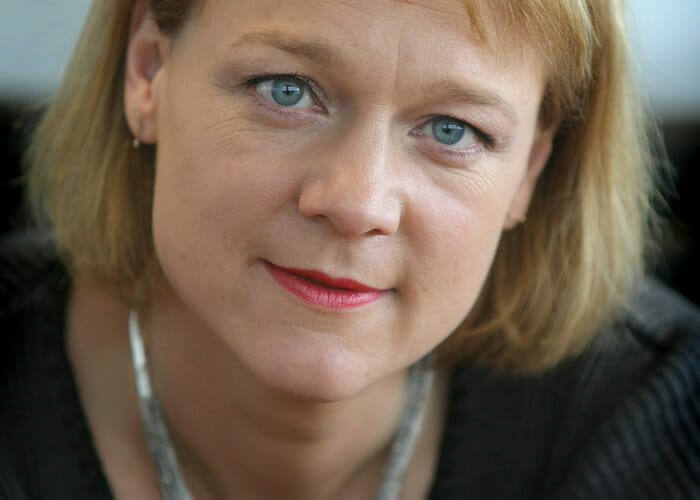The Dutch pension fund managers PGGM and APG Asset Management have done much of the leg work for other investors wishing to align their investments with the sustainable development goals (SDGs). The two investors are finalising a highly detailed process that identifies classifications where they see potential sustainable development investment (SDIs) opportunities that could transform the United Nations’ targets into tangible returns for institutional investors.
The result is investment opportunities linked to 13 of the UN’s 17 SDGs, and they are well on their way to integrating SDIs in the portfolio across all asset classes.
The managers, which invest a combined €600 billion ($705 billion) say these investments can fulfill the risk return requirements of their clients and provide a substantial and measurable contribution to one or more SDGs. Last year, APG achieved returns for its main clients, the $448 billion civil service scheme ABP and the $63 billion scheme for the building sector, BpfBouw, of 9.5 per cent and just over 8 per cent respectively.
“This is an important step towards developing a common language and moving from broad understanding of the investment principles to actual rules,” says Claudia Kruse, managing director sustainability and corporate governance at APG.
“More asset owners are dedicating resources to collaborate with us on this.”
The UN’s SDGs aim to help solve global challenges on climate, poverty, healthcare and education, and will require an estimated annual $5 trillion to $7 trillion by 2030.
In a highly detailed process PGGM and APG identify taxonomies or classifications where they see potential sustainable development investment (SDIs) opportunities that could transform the UN’s targets into tangible returns for institutional investors.
However not all SDGs are investable. For example, SDG 16 seeks peace and justice and strong institutions but the asset managers deem that it is “not possible to contribute to this goal through investment activity”.
In contrast, SDG 14 which targets “life below water” is investable because it could include potential areas of investment like systems and projects aiming to reduce water pollution such as wastewater treatment, sustainable fishing technologies and marine operation services like oil spill responders.
Measuring impact is one of the most challenging factors, say the investors. The taxonomies distinguish between investments where impact has and hasn’t been measured, and actively encourage reporting on measurable impacts.
A global leader in responsible investment
ABP, which is managed by APG and which has forged a reputation as a global leader in responsible investment, has set a target of doubling its allocation to high sustainability investments.
The pension fund has pledged to increase its allocation to SDIs from $34 billion in 2015 to $68 billion by 2020, including an investment of at least $5.9 billion in renewable energy, up from current levels of around $3.3 billion. So far the fund has invested $48 billion into SDI areas.
The allocation to SDIs will be split across asset classes. However SDIs are easier to integrate in allocations like renewable infrastructure than for example hedge funds, explains Els Knoope, senior responsible investment and governance specialist at APG.
“All asset classes will be included although not all have the same challenges, or opportunities,” Knoope says. “We are developing approaches that fit the different challenges of private and public markets with our portfolio managers.” The majority of the assets APG manages are run in-house.
ABP’s strategic investment mix consists of a 60 per cent allocation to equities and alternative investments and a 40 per cent allocation to fixed income investments. As the fund increasingly aligns strategy with SDIs this could change, Knoope believes. “It is a slow-moving process; as investment opportunities surface we will prioritise them and this could result in a shifting of capital overtime.”
And the giant pension fund is already well advanced in the process of integrating SDIs across the portfolio. By 2020 it aims to invest only in equities and corporate bonds where the company “pays sufficient attention to sustainability and responsible business practices,” according to its 2016 Sustainable and Responsible Investment Report. Under the strategy, the fund divides companies into leaders and laggards; over time it will divest from laggards unless they reform.
Elsewhere ABP’s green bond portfolio, where the fund invests in companies and governments to finance sustainable projects, has increased from $59 million in 2015 to $1.6 billion in 2016. Examples include new investments in the Belgian materials technology company Umicore, strong in metal recycling and rechargeable car batteries, and the Norwegian company Tomra Systems, which makes machines for collecting returned deposit bottles in supermarkets.
ABP’s real estate portfolio is already another important contributor to the pension fund’s SDIs target. The value of high sustainability investments in real estate rose from $24 billion to $27.5 billion last year.
Even where integration is trickier, ABP is making progress. To align its 5.1 per cent allocation to private equity with greater responsible investment, the fund designed a new questionnaire in 2016 that companies are required to complete prior to investment.
“We look at their policy, how they implement it, how they report on it and how they monitor it,” the fund says. “We also want to know how they approach climate change and the diversity on their boards.”
Trailblazers under observation
Other institutional investors are keenly watching APG and PGGM’s progress. Sweden’s four main buffer funds and Australia’s Construction and Building Unions Superannuation fund, Cbus Super, have expressed support for the research.
“We are seeing a great deal of interest from other investors keen to work with us who welcome the initiative,” Knoope says.
PGGM has already invested $11.7 billion in line with four SDGs themes – climate, food security, water scarcity and health – and is targeting $23 billion by 2020.



